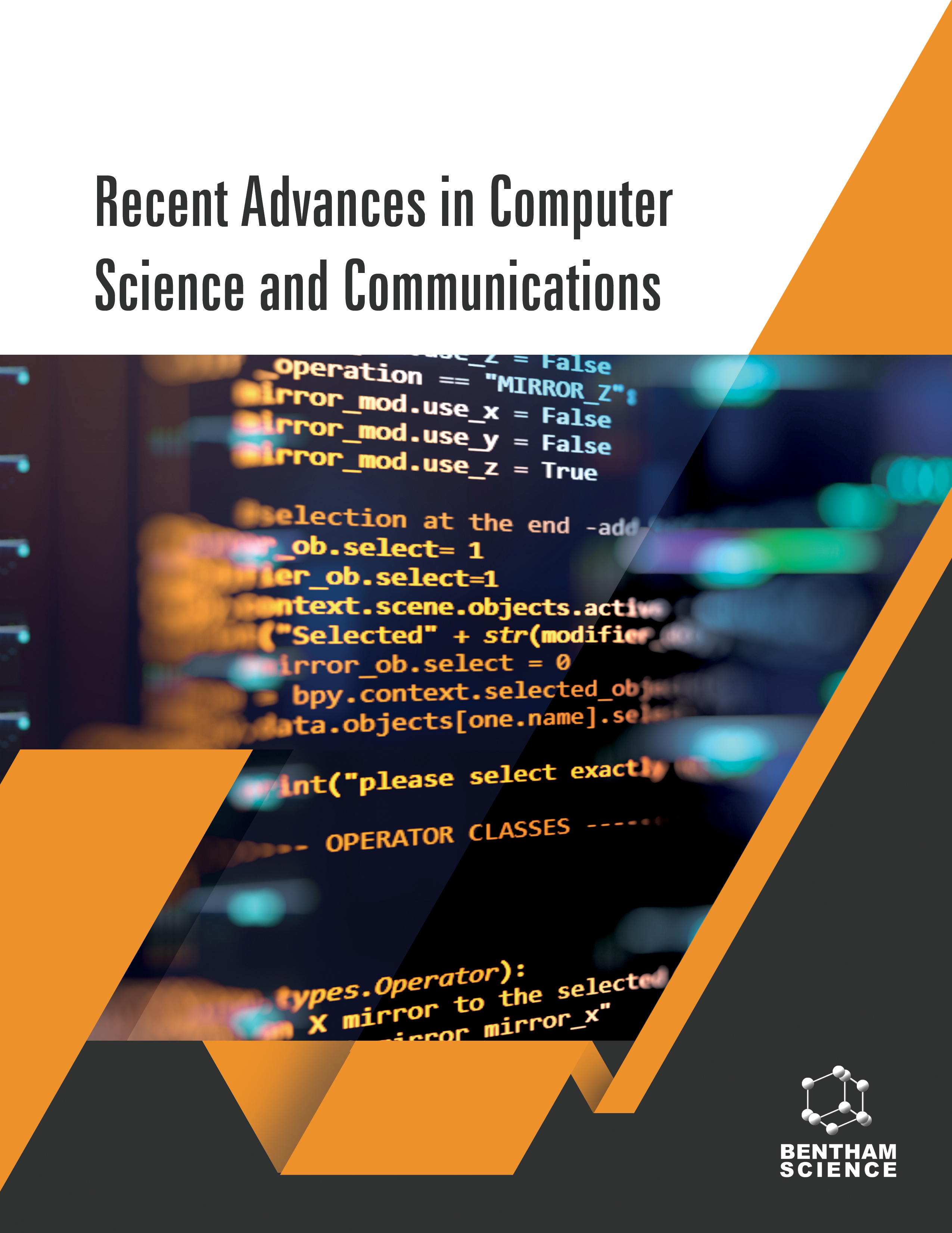- Home
- A-Z Publications
- Recent Advances in Computer Science and Communications
- Previous Issues
- Volume 17, Issue 6, 2024
Recent Advances in Computer Science and Communications - Volume 17, Issue 6, 2024
Volume 17, Issue 6, 2024
-
-
Komodo Dragon Mlipir Algorithm-based CNN Model for Detection of Illegal Tree Cutting in Smart IoT Forest Area
More LessIntroduction: Trees and woods are vital to preventing climate change and protecting our planet. Sadly, they are constantly being destroyed due to human activities like deforestation, fires, etc. Method: This research presents and examines an outline for using audio event categorisation to automatically detect unlawful tree-cutting activity in forests. To monitor large swaths of forest, the research team proposes using ultra-l Read More
-
-
-
CNN-FastText Multi-Input (CFMI) Neural Networks for Social Media Clickbait Classification
More LessAuthors: Chirag Sharma, Gurneet Singh, Pratibha S. Muttum and Shubham MahajanIntroduction: User-generated video portals, such as YouTube, are facing the challenge of Clickbait. These are used to lure viewers and gain traffic on specific content. The real content inside the video deviates from its title. and a thumbnail. The consequence of this is poor user experience on the platform. Methods: The existing identification techniques either use pre-trained models or are restricted to text only. Other video me Read More
-
-
-
Dynamic Data Placement Strategy with Network Security Issues in Distributed Cloud Environment for Medical Issues: An Overview
More LessAuthors: Devasis Pradhan, Majusha Behera and Mehdi GheisariThe rapid integration of distributed cloud systems in the healthcare industry has profoundly impacted the management of valuable medical data. While this advancement has significantly improved data handling, protecting sensitive healthcare information in such a complex environment remains daunting. This comprehensive study explores the crucial intersection between dynamic data placement strategies and network Read More
-
-
-
A Security Analysis Model for IoT-ecosystem Using Machine Learning-(ML) Approach
More LessAuthors: Pradeep K. N.S, MVV Prasad Kantipudi, Praveen N, Suresh S, Rajanikanth Aluvalu and Jayant JagtapIntroduction: The attacks on IoT systems are increasing as the devices and communication networks are progressively integrated. If no attacks are found in IoT for a long time, it will affect the availability of services that can result in data leaks and can create a significant impact on the associated costs and quality of services. Therefore, the attacks and security vulnerability in the IoT ecosystem must be detected to provi Read More
-
-
-
Performance Analysis of Cooperative Spectrum Sensing using Empirical Mode Decomposition and Artificial Neural Network in Wireless Regional Area Network
More LessAuthors: Sharad Jain, Ashwani Kumar Yadav, Raj Kumar and Vaishali YadavBackground: Radio spectrum is natural and the most precious means in wireless communication systems. Optimal spectrum utilization is a key concern for today's cutting-edge wireless communication networks. The impending problem of the lack of available spectrum has prompted the development of a new idea called “Cognitive Radio” (CR). Cooperative spectrum sensing (CSS) is utilized to improve the detection perfor Read More
-
-
-
A Distorted Light Field Image Correction Method Based on Improved Hough Transform
More LessAuthors: Ruihua Zhang and Shubo BiIntroduction: In using a camera to take photos, due to environmental limitations, uneven lighting can cause uneven distribution of the image light field, resulting in distortion of the image background and target, blurring of details, and distorted light field images. Method: In view of this, research is conducted on the correction of distorted light field images based on the Hough transform. First, the improved Hough transfo Read More
-
-
-
Research on Internet of Medical Things: Systematic Review, Research Trends and Challenges
More LessAuthors: Dinesh Anand, Avinash Kaur and Manpreet SinghIntroduction: Remote data exchange operations in healthcare are observed, consulted, monitored and treated by the Internet of Medical Things (IoMT). It is an extension of the Internet of Things (IoT). Method: At the growing stage of IoT, IoMT is speedily drawing researchers’ interest due to its extensive use in healthcare systems. Smaller and lower-priced wireless devices with various communication protocols have led to the Read More
-
Most Read This Month
Article
content/journals/rascs
Journal
10
5
false
en


